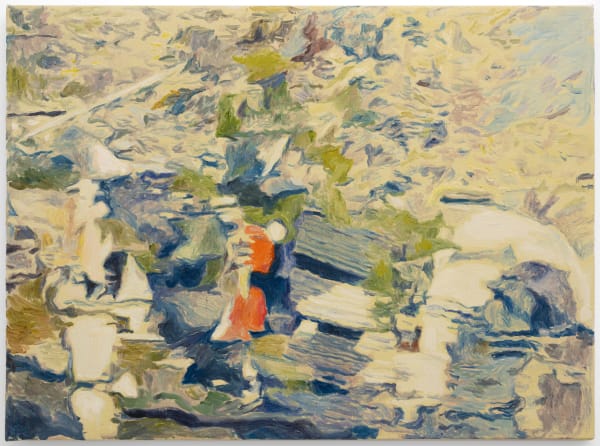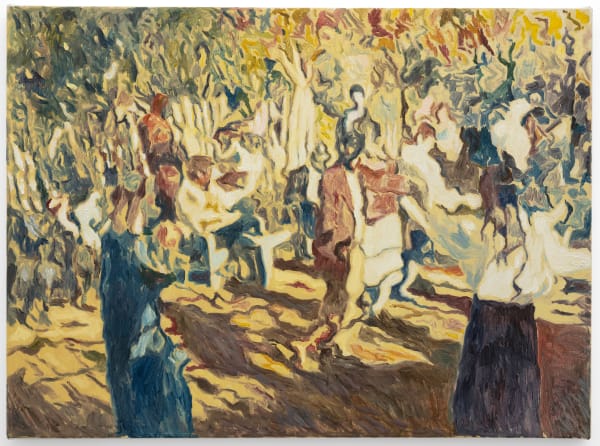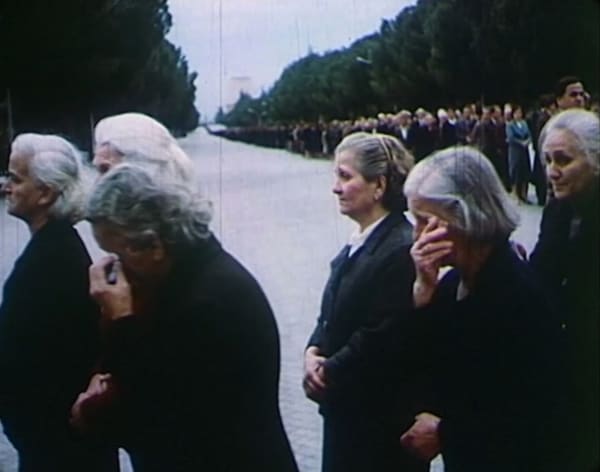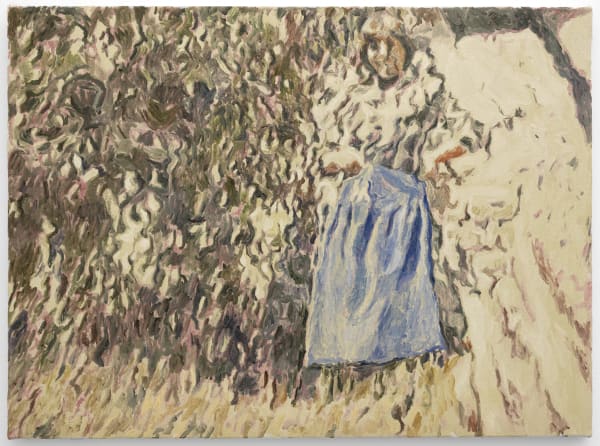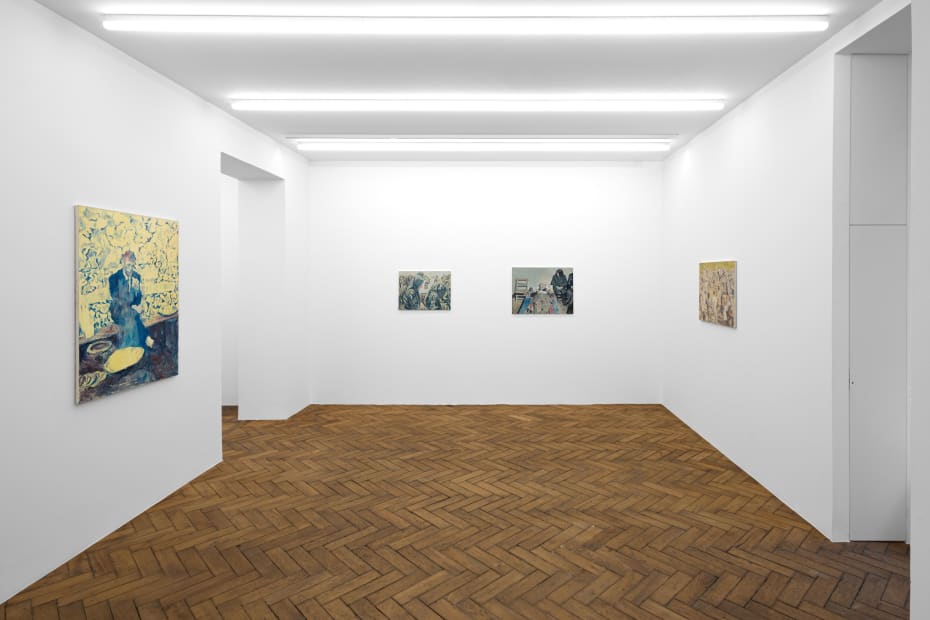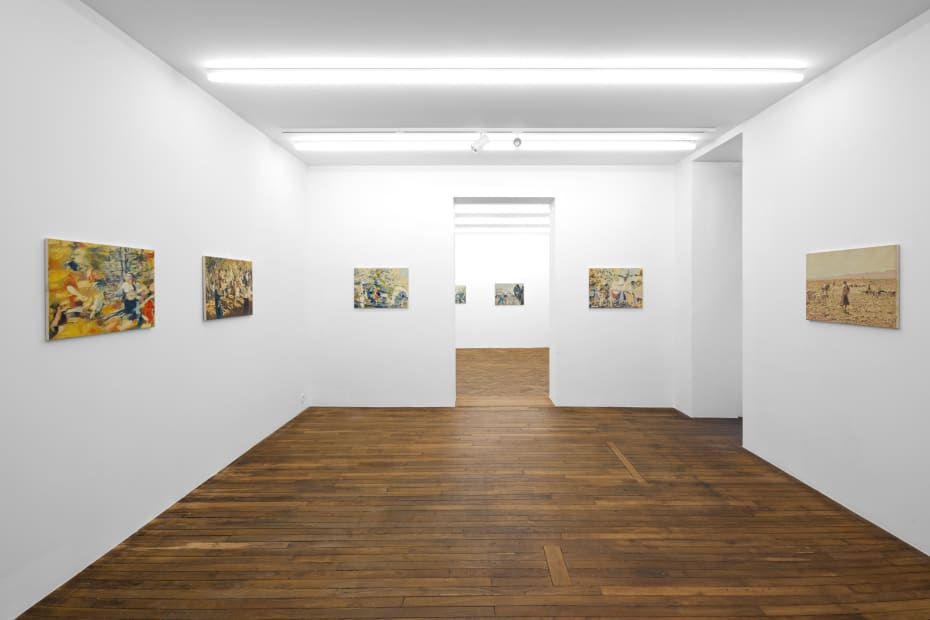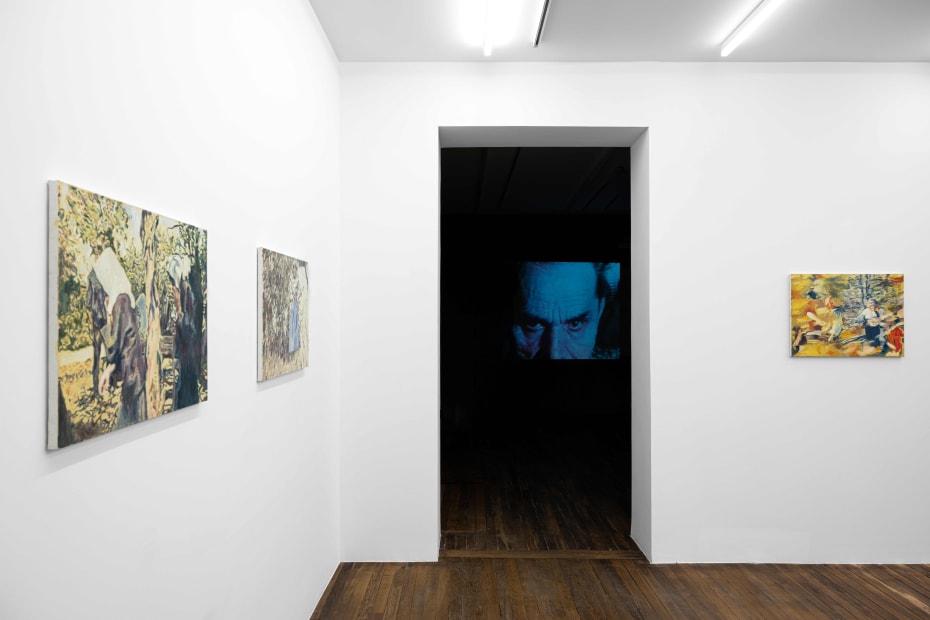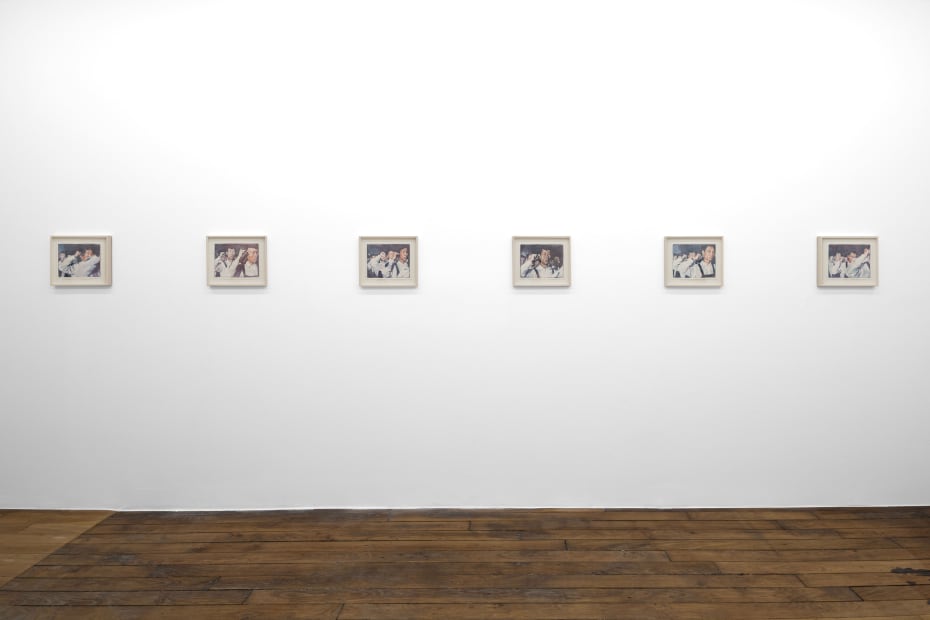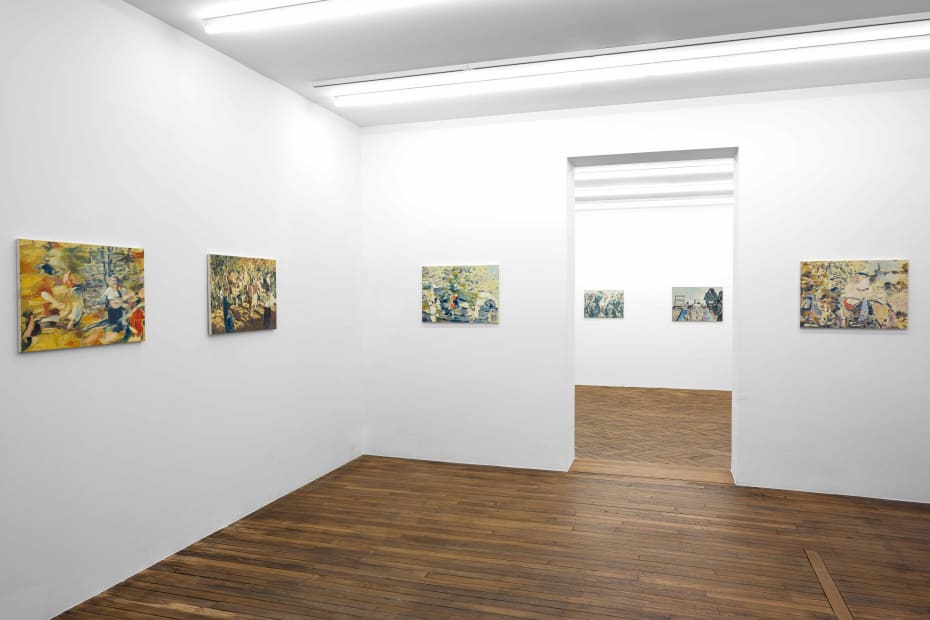Adrian Paci: Soft with SorrowGalerie Peter Kilchmann, Paris
Galerie Peter Kilchmann is delighted to present its seventh solo exhibition; and for the first time in its Paris gallery; by Adrian Paci (*1969 in Shkodra, Albania; lives and works between Milan and Shkodra). Entitled Soft with Sorrow, the exhibition features new paintings, works on paper, as well as the video installation Interregnum (2017).
Adrian Paci’s work is constructed in a relationship to moving images. He works from a corpus of multiple sources: amateur videos, YouTube clips, family films and cinema. For this new ensemble of paintings, Paci used as source material still images from video cassettes of weddings and funerals from rural Albania made between the 1990s and the 2000s that were given to him by friends. For other paintings such According to Pasolini (2023) and According to Paradjanov, Paci used as source material film stills from Pasolini’s Medea (1969) and Paradjanov’s The Colour of Pomegranates (1969) respectively, two authors whose films have inspired some of Paci’s earlier works.
Paci’s intention here is not to idolize the source or the context of these images. These elements are certainly respected, but the artist finds in them an intrinsic quality of autonomy: the images, by not containing just information, become a place of ambiguity and enigma. Taken away them from their contexts, the images become something new.
Paci believes that before being a way of doing, painting is a way of seeing. Observing these images, they offer themselves as possible paintings. It does not matter whether the artist’s gaze attributes this pictorial dimension or whether they themselves carry this potentiality. The artist watches/finds/sees this physicality. The quivering of the colours, their transparencies, their thicknesses, the movement of the brush conspire to such an extent that carrying them onto the canvas becomes a necessity that follows the suggestion coming from the intrinsic quality of the image. “You just follow what you see, you apply your hands and the matter of the paint. As you would read a text aloud with the awareness that the voice is not only the text, it simultaneously produces a singular and somehow indipendent body. The painting then becomes the trace of this process,” says Paci. The painting has its own body. By standing autonomously in front of the viewer, it encourages dialogues and bold gestures. The painting does not conclude the process, it remains in a state of becoming, as if open, engaging the viewer to invest it with new possibilities. In this, Paci feels close to the two filmmakers whose imagination exploits a kind of collective memory (of history, of painting…) while moving the experience into an unexpected field for the viewer.
By not responding to any hierarchy, as suggested by the exhibition space, the sum of the intriguing ambiguity of these 18 new paintings and works on paper creates an infinitely vast field of possibilities where the spectator is invited to found a new territory, to build an unprecedented context. As discussion pieces, ultimately, the works are a domain of coexistence. On the basis of this coexistence, Paci explores the relationships between fictions and realities, existential concerns and spaces devoted to fantasies and games. Rituals perfectly embody these dialogues between the processes of life and their dramatization. In Albania, after the collapse of the regime, these rituals were reactivated in an anarchic way. Despite their festive temperament, the sequences of Dancers (2023) possess all the fragility and freshness of a celebration in a precarious state. The Mourners (2023) had already been the subjects of earlier works.
Interregnum (2017) gathers fragments of videos documenting the funerals of communist dictators. These moments deeply broke apart the systems of power in which the individual was diluted in the political body. Pain, absent from the resolutely optimistic rhetoric of the regimes, finally surged forth in the public space. The absurd procession parades, the deceased is absent. A careful montage affirms that, despite everything, these individuals are animated by the complexity of singular emotions. To accompany the rituals that surround mourning and celebration, Paci highlights that in these contrasting conditions, the figures are taken over by gestures, by forms, by sounds, letting themselves be carried away in a similar choreography. The relationship is that of the individual to the collective, of singularity in a multitude, of subjects in an organic relationship, in communion with the lights and shadows of the landscape (Woman in the shadows, Under the shadow, 2023). Painting helps to resolve these tensions by bringing everything back to the democratic level of the surface. Each element is deployed with equal importance.
Here, humanity is in a kind of perpetual movement. The silhouettes dance, appear at the corner of a leafy tree, disappear, in the crowd or in the corner of the painting, seemingly attracted by the distance or heading towards the heart of the ritual. The forces driving them are both vertical and horizontal. Thus, they move not only on the ground, the canvas or the paper, but between earth and heaven, in a state of levitation that one would not imagine to be inherent in sorts of spiritual creatures. They are present, anonymous, ageless, freed from any temporality. They vibrate in an archaic space, in this enigma that consecrates complicity/duplicity of joys and hardships, Soft with Sorrow.
-
 Adrian Paci, According to Paradjanov, 2023
Adrian Paci, According to Paradjanov, 2023 -
 Adrian Paci, According to Paradjanov, 2023
Adrian Paci, According to Paradjanov, 2023 -
 Adrian Paci, According to Paradjanov, 2023
Adrian Paci, According to Paradjanov, 2023 -
 Adrian Paci, Dancers, 2022
Adrian Paci, Dancers, 2022 -
 Adrian Paci, Dancers, 2023
Adrian Paci, Dancers, 2023 -
 Adrian Paci, Interregnum, 2017
Adrian Paci, Interregnum, 2017 -
 Adrian Paci, Mourners, 2023
Adrian Paci, Mourners, 2023 -
 Adrian Paci, Shadow, 2018
Adrian Paci, Shadow, 2018 -
 Adrian Paci, Woman in the shadows, 2023
Adrian Paci, Woman in the shadows, 2023

